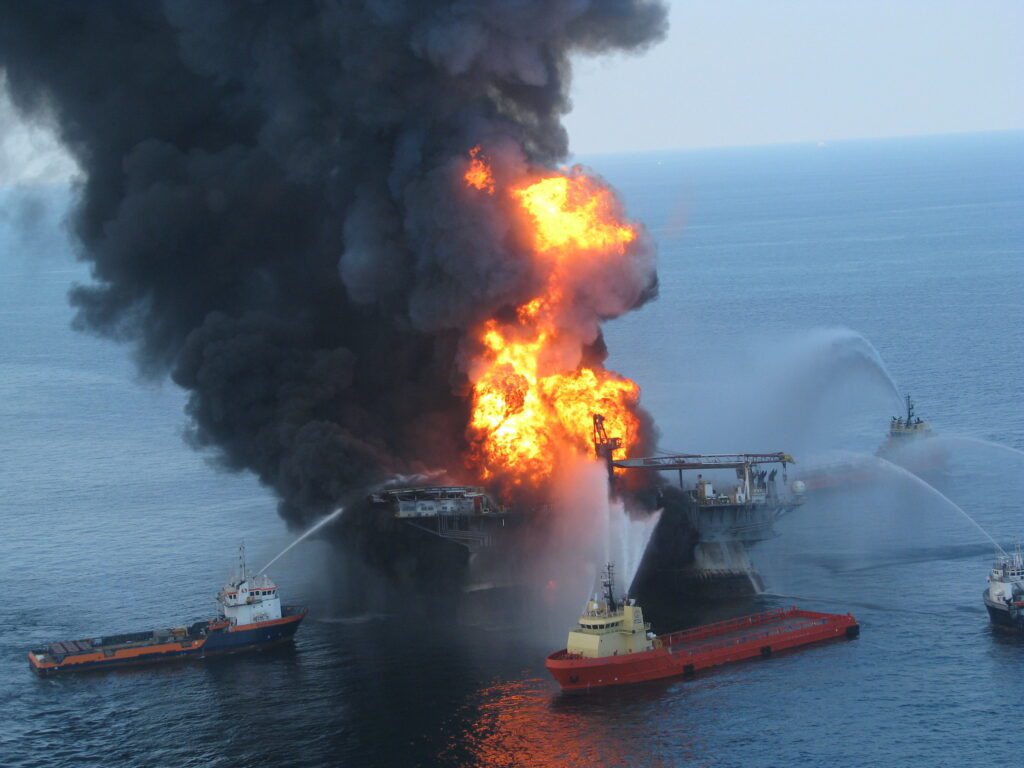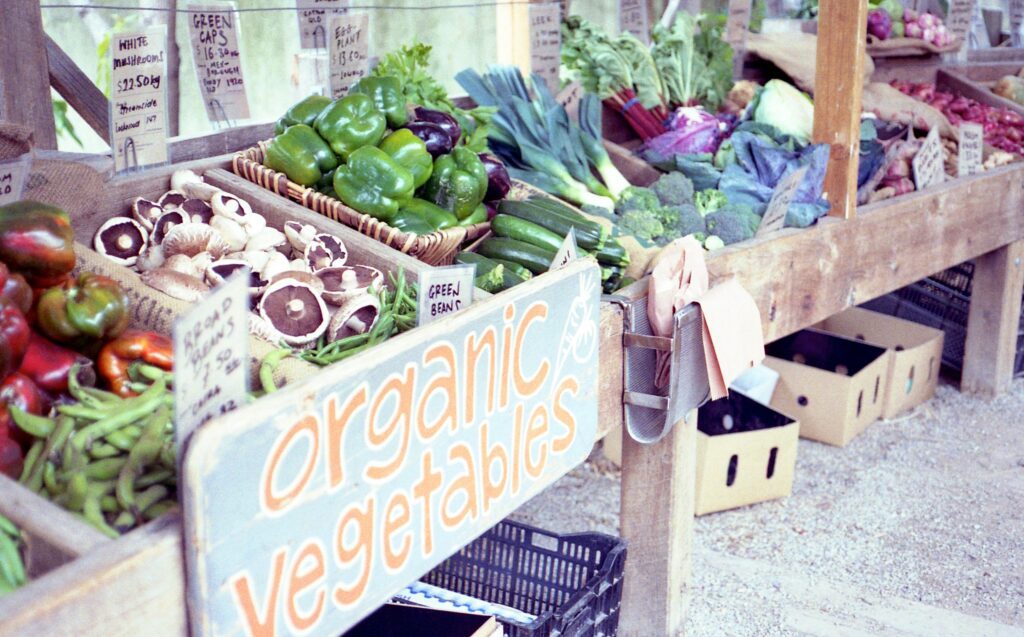


America’s highest court has limited the EPA’s authority to regulate power plant emissions.
By Reynard Loki, Independent Media Institute
9 min read
Signed into law by President Richard Nixon in 1970 with the intention of reducing and controlling air pollution nationwide, the Clean Air Act is the nation’s primary federal air quality law, giving the Environmental Protection Agency (EPA) the authority to regulate air emissions from sources that are either stationary (e.g., power plants) or mobile (e.g., vehicles).
On June 30, the Supreme Court limited that authority with its controversial ruling in the case of West Virginia v. Environmental Protection Agency, dealing a heavy blow to President Joe Biden’s climate agenda. At the center of the case is Section 111 of the Clean Air Act, which establishes mechanisms that the EPA can use in order to control emissions of air pollutants from stationary sources like power plants.
Writing the opinion for the conservative majority, with the three liberal justices dissenting, Chief Justice John Roberts said that Section 111 does not give the EPA the authority to regulate greenhouse gas emissions from existing power plants by “generation shifting”—which could force power plants to move away from coal to renewable energy. The ruling removes a primary mechanism the Biden administration has for achieving the president’s goal of halving carbon dioxide emissions by 2030—and moving the nation to a low-carbon economy.
Major Questions
Roberts said that the basis for the court’s decision was the “major questions doctrine” (MQD)—a phrase that no previous Supreme Court majority had explicitly invoked. In the majority opinion, Roberts writes that the MQD has now been invoked “because it refers to an identifiable body of law that has developed over a series of significant cases all addressing a particular and recurring problem: agencies asserting highly consequential power beyond what Congress could reasonably be understood to have granted.”
He said that if lawmakers had wished to grant the EPA the power to mandate how power plants generate electricity, the law should have stated “clear congressional authorization,” adding that “our precedent counsels skepticism toward EPA’s claim” that the law “empowers it to devise carbon emissions caps based on a generation shifting approach.” Basically, the ruling states that the EPA would overstep its remit in its regulation of power plant emissions if it mandated a move to renewable energy.
Justice Elena Kagan, writing in dissent, said that in using “capacious terms” in Section 111, Congress gave the EPA a wide berth in designing its emission reduction rules. “The current Court is textualist only when being so suits it,” she writes. “When that method would frustrate broader goals, special canons like the ‘major questions doctrine’ magically appear as get-out-of-text-free cards.” She further writes that the ruling “strips” the EPA of the “power Congress gave it to respond to ‘the most pressing environmental challenge of our time.’”
Cloudy: Zero-Carbon Future
If solar and wind energy are fully integrated into the global energy mix, renewable sources could provide up to 80 percent of the world’s electricity, according to the International Renewable Energy Agency, an intergovernmental organization based in Abu Dhabi that supports nations in the transition to sustainable energy. The United States plays a central role in the global shift to a low-carbon—and ultimately, zero-carbon—economy: After China, it is the world’s second-biggest consumer of energy.
Generating electricity without emissions is one of the primary strategies we have in order to achieve net-zero emissions—something that the National Academies of Sciences, Engineering, and Medicines assert is technologically feasible in the U.S. by 2050. But by limiting the federal government’s ability to cap emissions by mandating a shift to renewable power generation, the Supreme Court has made a zero-carbon future more difficult not only for the U.S. but also for the world. “If the current rate of emissions continues, children born this year could live to see parts of the Eastern seaboard swallowed by the ocean,” Kagan wrote in the court’s dissenting opinion. This is not just a problem in the U.S.: Several islands in the northern Solomon Islands, a nation of hundreds of islands in the south Pacific, have already been swallowed by the rising sea levels.
“Whatever else this Court may know about, it does not have a clue about how to address climate change,” Kagan writes. “And let’s say the obvious: The stakes here are high. Yet the Court today prevents congressionally authorized agency action to curb power plants’ carbon dioxide emissions. The Court appoints itself—instead of Congress or the expert agency—the decisionmaker on climate policy. I cannot think of many things more frightening.”
Dena Adler, a research scholar at the Institute for Policy Integrity at New York University School of Law, also questioned Roberts’ highly irregular use of the MQD. “The major questions doctrine is in part problematic because Congress has legislated for decades with an expectation that it can broadly authorize agencies to use their expertise,” she told E&E News. “Yet, as the court applied it today, the doctrine looks skeptically on agencies regulating under this broad authorization.”
In a statement, EPA Administrator Michael S. Regan said he is “deeply disappointed by the decision,” but noted that the agency “will move forward with lawfully setting and implementing environmental standards that meet our obligation to protect all people and all communities from environmental harm.”
‘Supremely Stupid’
The reaction from environmentalists has been unanimous and scathing.
John Noël, a senior climate campaigner with Greenpeace USA, called the ruling “irresponsible” and “supremely stupid,” in an email. “This ruling is going to hurt people. It’s going to hurt wildlife. It’s going to make it easier for business owners to challenge clean air regulations. If there was ever a doubt that this Supreme Court favors the powerful over the people, it’s gone.”
“How much damage can a conservative Supreme Court do to our rights in just a couple of weeks? Unfortunately, we know the answer, and it’s grim,” wrote actress and activist Julia Louis-Dreyfus, in an email.
“We should be outraged by what the Supreme Court has done,” said Jason Rylander of the Center for Biological Diversity, a nonprofit headquartered in Tucson, Arizona, in an online press briefing on July 1.
Kevin S. Curtis, the executive director of the Washington, D.C.-based nonprofit NRDC Action Fund, said in an email that the “deeply damaging” ruling “has set us back half a century—at a moment when… we have no time to lose,” adding that the decision is “radically out of step with settled law, scientific and medical consensus, and widely held public opinion.”
Biden’s Climate Toolbox
It is important to note that, while representing a significant setback to executive climate action, the ruling restricts—but does not eliminate—the agency’s ability to reduce power plants’ carbon pollution. President Biden still has an array of levers at his disposal, several of which he has yet to pull. He can, for example, declare a climate emergency under the National Emergencies Act, which would unlock a variety of presidential powers. “If Biden were, for instance, to ban just crude oil exports, he could cut greenhouse gas emissions by up to 165 million metric tons each year—the equivalent of shuttering 42 coal plants,” write Jean Su and Maya Golden-Krasner, both of the Center for Biological Diversity, in the Nation.
“President Biden must take charge as the climate president,” Gaby Sarri-Tobar of the Center for Biological Diversity and Ted Glick of Beyond Extreme Energy wrote in an email. “He’s already shown a willingness to do this by invoking the Defense Production Act to boost domestic manufacturing of renewable energy technology and advance energy justice by giving frontline and labor communities a seat at the table.”
Additionally, states and local governments can also regulate their own emissions. “A bill passed in Maine [in 2019], for example, calls for emissions at 80 percent below 1990 levels by midcentury, with a halfway goal by 2030,” writes Hillary Rosner for Audubon, a nonprofit environmental organization. “And Hawaii’s 2018 legislation sets a goal of carbon neutrality by 2045. Connecticut and California, meanwhile, have been working to curb emissions for more than a decade.”
Lawmakers on Capitol Hill could also enact far-reaching clean energy legislation—and could even amend Section 111 of the Clean Air Act to give the EPA explicit authority to move power plants toward renewables in order to meet federally mandated emission reductions. And voters could elect and support climate-focused lawmakers—and get their friends, families and community members to do the same.
When the Going Gets Tough, the Tough Get… Voting
Curtis of the NRDC Action Fund said that the ruling “[shows] us that we cannot take legal and federal protections for granted.” Part of not taking those protections for granted means participating in our democracy, and that means voting, particularly casting ballots during midterm elections when federal legislators are elected. It is the members of the House and Senate who decide the federal government’s legislative agenda.
To put the nation on a zero-carbon pathway—and to withstand attacks from a conservative, activist Supreme Court—federal lawmakers must pass clear and strong climate legislation. That means getting climate-focused legislators into office on Capitol Hill. And that means getting climate-focused voters to cast their votes during the midterm elections.
In his email, Curtis called for a midterm election “get-out-the-vote” campaign to “defeat the anti-environment legislators who could pave the way for a conservative agenda that dismantles our rights and our future.” Similarly, the EPA’s largest union, AFGE Council 238, which called the court’s decision a “colossal mistake,” urged people to “demand climate justice” from their elected representatives.
“Without meaningful legislative progress in the coming months… the country will fall far short of its international pledges, which, given the scale of American emissions, will make it almost impossible for the world as a whole to fulfill its already unlikely targets,” writes David Wallace-Wells in the New York Times. “If Republicans win control of Congress in the November midterms, then the window on the prospect of such legislation may be shut for at least a few years.”
The bottom line is that the ruling, while disheartening (and to the environment and public health, even dangerous), is not a death knell for climate action. Like pro-choice supporters disappointed by the court’s recent overturning of Roe v. Wade, those who are concerned about the court’s EPA ruling could use this moment as a rallying cry to step up climate action. If it weren’t already abundantly clear, the Supreme Court—or rather, the conservative majority of the Supreme Court—has underscored that a fundamental part of climate action would be going to the polls during this year’s midterm elections. Ensuring a healthy environment for ourselves, our families and our fellow Earthlings—for this and future generations—means getting involved in the political process, and that means voting. Voting also means getting the right to complain. So the next time you hear someone grumbling about the “supremely stupid” Supreme Court decision, ask them: “Are you voting on November 8?”
###
Reynard Loki is a writing fellow at the Independent Media Institute, where he serves as the editor and chief correspondent for Earth | Food | Life. He previously served as the environment, food and animal rights editor at AlterNet and as a reporter for Justmeans/3BL Media covering sustainability and corporate social responsibility. He was named one of FilterBuy’s Top 50 Health & Environmental Journalists to Follow in 2016. His work has been published by Yes! Magazine, Salon, Truthout, BillMoyers.com, Counterpunch, EcoWatch and Truthdig, among others.
Take action…

President Biden: Declare a climate emergency
“Climate change is here, and the stakes couldn’t be higher. The recent Supreme Court decision limiting the Environmental Protection Agency’s authority to regulate coal- and gas-fired power plants makes it abundantly clear that President Biden must declare a climate emergency,” says the Center for Biological Diversity.
“Officially declaring the climate crisis a national emergency would unlock the tools needed to steer the economy away from fossil-fueled climate catastrophe toward a sustainable, just future. Biden needs to hear from you.”
Urge President Biden to finally declare a climate emergency.
Cause for concern…

Fail: Biden’s offshore drilling plan
“The Biden administration announced its plan for oil and gas drilling off the coasts of the United States, closing off the possibility of new leases in the Atlantic, Pacific and Arctic Oceans but potentially allowing new lease sales in both the Gulf of Mexico and in Cook Inlet in Alaska,” reports Lisa Friedman for the New York Times. “The five-year plan for America’s coastal waters, required by law, risks angering both the fossil fuel industry and environmentalists.”
“The Biden administration had an opportunity to meet the moment on climate and end new offshore oil leasing,” said Drew Caputo, vice president of litigation at Earthjustice, an environmental organization. He called the new plan’s option to include lease sales “a failure of climate leadership.”
Round of applause…

Gov. Newsom signs nation’s most far-reaching law phasing out single-use plastics
“California has passed an ambitious law to significantly reduce single-use plastics, becoming the first state in the U.S. to approve such sweeping restrictions,” reports Dani Anguiano for the Guardian. “Under the new law, which California’s governor, Gavin Newsom, signed on [June 30], the state will have to ensure a 25 percent drop in single-use plastic by 2032. It also requires that at least 30 percent of plastic items sold or bought in California are recyclable by 2028, and establishes a plastic pollution mitigation fund.”
ICYMI…

Can eating organic help prevent Parkinson’s Disease?
“Because fruits, vegetables and cereals harvested from organic crops have been treated with natural and synthetic pesticides, which are less likely to cause health problems, they are the perfect alternative to conventionally grown produce. Natural and synthetic pesticides are not as toxic as paraquat or glyphosate and include copper hydroxide, horticultural vinegar, corn gluten, neem and vitamin D3. Furthermore, organic products usually have more nutrients, such as antioxidants. People with allergies to foods, chemicals or preservatives can greatly benefit from such healthy food sources. They may even notice that their symptoms alleviate or go away when they eat exclusively organic food.”
—EFL contributor Miguel Leyva, “Can Eating Organic Help Prevent Parkinson’s Disease?” (New Europe, February 15, 2022)
Parting thought…

Earth | Food | Life (EFL) explores the critical and often interconnected issues facing the climate/environment, food/agriculture and nature/animal rights, and champions action; specifically, how responsible citizens, voters and consumers can help put society on an ethical path of sustainability that respects the rights of all species who call this planet home. EFL emphasizes the idea that everything is connected, so every decision matters.
Click here to support the work of EFL and the Independent Media Institute.
Questions, comments, suggestions, submissions? Contact EFL editor Reynard Loki at [email protected]. Follow EFL on Twitter @EarthFoodLife.